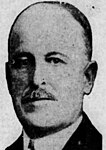
David E. Zuckerman is an American politician who is currently serving as the 84th lieutenant governor of Vermont since 2023. He previously served two terms as the 82nd lieutenant governor of Vermont, from 2017 to 2021. A member of the Vermont Progressive Party, he previously served in the Vermont House of Representatives for seven terms (1997–2011), and the Vermont Senate for two (2013–2017). In 2020, Zuckerman was a candidate for governor of Vermont. He ran with the support of both the Progressive Party and the Democratic Party, but lost to incumbent governor Phil Scott in the general election.
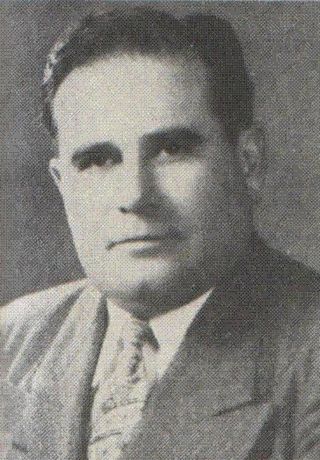
Harold John Arthur was the 68th governor of Vermont from 1950 to 1951. He also served as the 64th lieutenant governor of Vermont from 1949 to 1950.

The Vermont Senate is the upper house of the Vermont General Assembly, the state legislature of the U.S. state of Vermont. The senate consists of 30 members elected from multi-member districts. Each senator represents at least 20,300 citizens. Senators are elected to two-year terms and there is no limit to the number of terms that a senator may serve.

The 1946 Vermont gubernatorial election took place on November 5, 1946. Incumbent Republican Mortimer R. Proctor ran unsuccessfully for re-election to a second term as Governor of Vermont, losing to Ernest W. Gibson, Jr. in the Republican primary. Gibson defeated Democratic candidate Berthold C. Coburn in the general election.

The 1942 Vermont gubernatorial election took place on November 3, 1942. Incumbent Republican William H. Wills ran successfully for re-election to a second term as Governor of Vermont, defeating Democratic candidate Park H. Pollard.

The 1940 Vermont gubernatorial election took place on November 5, 1940. Incumbent Republican George Aiken did not run for re-election to a third term as Governor of Vermont, instead running for the United States Senate. Republican candidate William H. Wills defeated Democratic candidate John McGrath to succeed him.
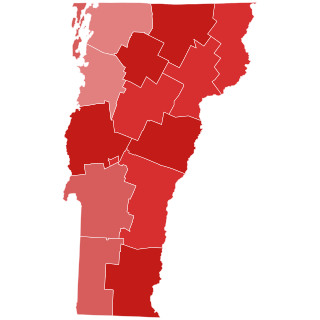
The 1930 Vermont gubernatorial election took place on November 4, 1930. Incumbent Republican John E. Weeks did not run for re-election to a third term as Governor of Vermont. Republican candidate Stanley C. Wilson defeated Democratic candidate Park H. Pollard to succeed him.
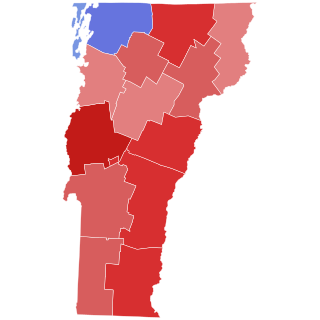
The 1926 Vermont gubernatorial election took place on November 2, 1926. Incumbent Republican Franklin S. Billings, per the "Mountain Rule", did not run for re-election to a second term as Governor of Vermont. Republican candidate John E. Weeks defeated Democratic candidate Herbert C. Comings to succeed him.

The 1906 Vermont gubernatorial election took place on September 4, 1906. In keeping with the Republican Party's "Mountain Rule", incumbent Republican Charles J. Bell, did not run for a second term as Governor of Vermont. At the start of the year, Percival W. Clement and Fletcher D. Proctor were the leading candidates for the Republican nomination. When it became clear that Proctor had the support of the delegates, Clement ended his campaign for the nomination. He filed as an Independent candidate for the general election and was subsequently endorsed by the Democratic Party. In the general election, Proctor easily defeated Clement.

The 1888 Vermont gubernatorial election took place on September 4, 1888. Incumbent Republican Ebenezer J. Ormsbee, per the "Mountain Rule", did not run for re-election to a second term as Governor of Vermont. Republican candidate William P. Dillingham defeated Democratic candidate Stephen C. Shurtleff to succeed him.

The 1886 Vermont gubernatorial election took place on September 7, 1886. Incumbent Republican Samuel E. Pingree, per the "Mountain Rule", did not run for re-election to a second term as Governor of Vermont. Republican candidate Ebenezer J. Ormsbee defeated Democratic candidate Stephen C. Shurtleff to succeed him.

The 1980 United States Senate election in Vermont took place on November 4, 1980. Incumbent Democratic U.S. Senator Patrick Leahy narrowly won reelection to a second term, defeating Republican Stewart Ledbetter, the former Vermont Commissioner of Banking and Insurance.

The 1867 Vermont gubernatorial election took place on September 3, 1867. In keeping with the "Mountain Rule", incumbent Republican Paul Dillingham was not a candidate for another term as governor of Vermont. The Republican nomination was won by John B. Page, who had previously served as Vermont State Treasurer. The Democratic nomination was won by John L. Edwards of Newport, who had previously served as State's Attorney of Orleans County. In the general election, Page was elected to a one-year term as governor.

The 1864 Vermont gubernatorial election for governor of Vermont took place on September 6. Incumbent J. Gregory Smith was a candidate for reelection to a second one-year term, in keeping with the provisions of the Republican Party's "Mountain Rule". The Democratic nominee was Timothy P. Redfield, a former member of the Vermont Senate, the Free Soil Party's 1851 nominee for governor, and the Democratic nominee in 1863. In the general election, the Republican Party's dominance of Vermont politics continued, and Smith was easily reelected.

The 1863 Vermont gubernatorial election for governor of Vermont took place on September 1. In accordance with the Republican Party's "Mountain Rule", incumbent Frederick Holbrook was not a candidate for reelection. The Republican nominee was J. Gregory Smith, the Speaker of the Vermont House of Representatives. The Democratic nominee was Timothy P. Redfield, a former member of the Vermont Senate and the Free Soil Party's nominee for governor in 1851. In the general election, the Republican Party's dominance of Vermont politics and government continued, and Smith was easily elected to a one-year term.

The 1855 Vermont gubernatorial election for governor of Vermont was held on September 4. With the Whig Party defunct after 1854, incumbent Stephen Royce, who had run with the support of both Whigs and the new Republican Party in 1854, ran as the nominee of the Republicans. The Democratic candidate was Merritt Clark, who had run unsuccessfully against Royce in 1854. James M. Slade, the Clerk of the Vermont House of Representatives was the nominee of the Know Nothing Party, also called the American Party.

The 1859 Vermont gubernatorial election for governor of Vermont was held on Tuesday, September 6. In keeping with the "Mountain Rule", incumbent Republican Hiland Hall was a candidate for a second one-year term. The Democratic nominee was John Godfrey Saxe, former State's Attorney of Chittenden County.
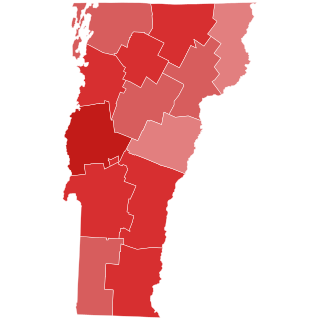
The 1860 Vermont gubernatorial election for governor of Vermont was held on Tuesday, September 4. In keeping with the "Mountain Rule", incumbent Republican Hiland Hall was not a candidate for a third one-year term. The Republican nominee was former Governor Erastus Fairbanks. With the Democratic Party fracturing nationally over the slavery issue, John Godfrey Saxe, the Democratic nominee against Hall in 1859, appeared on the ballot as a supporter of Stephen A. Douglas for president. Robert Harvey appeared as a supporter of Democratic presidential candidate John C. Breckinridge.

A general election were held in the U.S. state of Vermont in 2022. All of Vermont's executive officers were up for election as well as Vermont's Class 3 U.S. Senate seat and its lone seat in the U.S. House of Representatives.

The 2022 United States secretary of state elections were held on November 8, 2022, to elect the secretaries of state in twenty-seven states. These elections took place concurrently with several other federal, state, and local elections.



